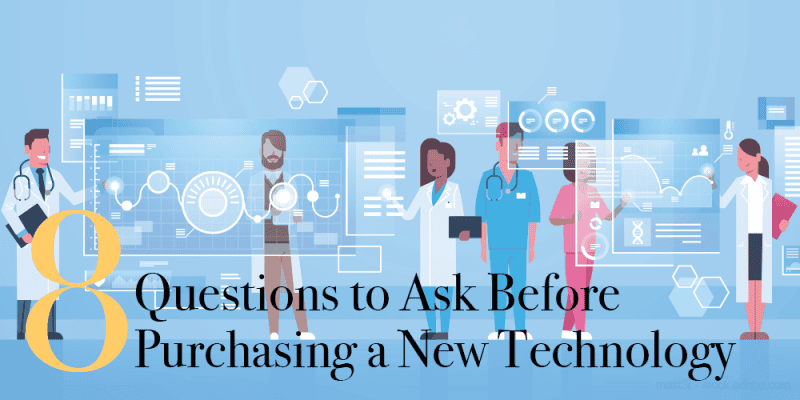By Karen Appold | February 8, 2019
Original Source
Health plans have limited budgets for technology innovations. Therefore, they need to take great care in their decision-making process to determine new technologies that will offer the most value, says Mark Nathan, CEO and founder of Zipari, which develops technology to better health insurers’ member engagements.
Be sure to ask the right questions before bringing a new technology on board. Here are the eight facts experts say you need to know when considering technology purchases.
Question #1: Is this technology interoperable with existing systems and capable of sharing data across the care continuum to drive quality improvement? “Interoperability is critical to healthcare innovation because it provides overarching visibility into the care and well-being of the patient throughout their journey,” says Ken Botsford, MD, chief medical advisor of naviHealth, a post-acute care management company that manages risk. “In searching for a solution, it’s important to choose a strategic partner who is committed to making all systems work together with integrated workflows and align them for improved visibility. The potential to have all patient data in a single view is now a reality and shouldn’t be compromised.”
Question #2: Will this technology provide new data and insights into my customer base? “Health insurers should always question how equipped their current technology is to deliver data-rich customer profiles,” says John Sculley, chairman and chief medical officer of RxAdvance, a cloud-based pharmacy benefit manager. “Healthcare is at least a decade behind other industries (such as financial services, telecommunications, media, and entertainment) when it comes to adapting cloud platforms and actionable analytics to solve big customer problems. Having access to more customer insights will ultimately improve customer satisfaction.”
Question #3: Will this technology put my company at the cutting edge of innovation and disruption? “Technology is advancing at an exponential rate, and therefore your strategy shouldn’t be to simply keep pace with it—adopt innovations that will put you two steps ahead,” says Sculley, Apple’s former CEO. “Start by taking stock of how competitors are integrating technology, and consider what other applications the technology could be used for beyond its current purpose. The tech product lifecycle can quickly evolve from a curious tool to an indispensable resource that disrupts entire industries. The tech should not only be new, but a different type of disrupter that moves the industry forward.”
Question #4: Do I have the right talent and processes to operationalize the tool to generate insight and value? “There is often a lack of communication between IT and business stakeholders once a technology is selected,” says Tushad Driver, vice president of products at Gray Matter Analytics, a healthcare analytics solutions company. “IT implements the solution and hands it over to the business organization, but rarely do stakeholders work together to ensure that technology is implemented properly to address a business’ needs and employed to generate insights and derive value. Ensure that you have the right people with the right expertise to make the technology investment successful.”
Question #5: Can I measure the tool’s effectiveness and fit within my enterprise to rationalize its usage? “Health plans need to think about what they are trying to achieve with technology investments and how to best measure their impact,” Driver says. “While technology investments may be driven by one function, they could potentially impact others in an adverse way. Determine how to ensure that all relevant functions are positioned to benefit from the investment.”
Question #6: Will the shift to value-based care allow this technology system to succeed? “The shift from volume to value-based care is gaining traction through the healthcare industry, challenging health plans to ask themselves if a technology system will allow them to thrive within their ecosystem,” Botsford says. “Solutions that support patient-centric care, measure outcomes, and offer robust analytics can grow in a value-based environment.”
Question #7: Will this technology build better customer relationships and increase brand sentiment? “Members that are more engaged are more likely to heed recommendations that drive their behavior toward meeting health goals and reducing expenses,” Nathan says. “Modern technology must provide the tools and metrics to establish better relationships with their members, resulting in increased brand sentiment. Plans with superior brand sentiment drive the most improvement in member health outcomes and offer more receptivity for members to make decisions that drive down cost without compromising quality.”
Question #8: Is the technology future-proof? “In the past, health plans had the luxury of performing transactions in a batch,” Nathan says. “Now, health plans must do everything in real-time, which requires a new set of criteria when choosing vendors. Technology purchases should be products that continually update over time to add value, while simultaneously integrating with legacy systems using industry-standard and modern micro-services. This will ensure that a new technology doesn’t have to be replaced for quite some time.”
Karen Appold is a medical writer in Lehigh Valley, Pennsylvania.

